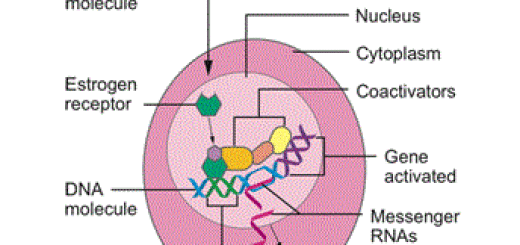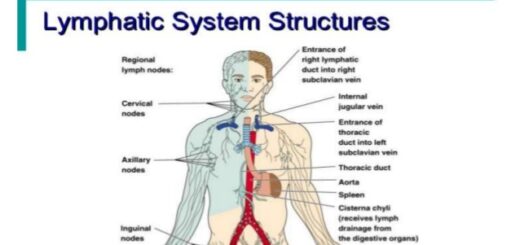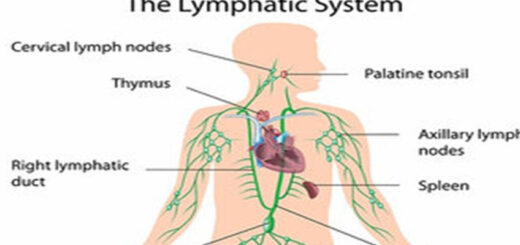Functions and sources of Folic acid, Cobalamin (vitamin B12) and Vitamin K
Folate and vitamin B12 are essential for DNA maturation during erythropoiesis, hence their deficiency causes anemia. Vitamin K acts as a co-factor in the synthesis of several clotting factors in the liver, and its deficiency causes bleeding tendency. Folate deficiency leads to Glossitis, and gastrointestinal disturbances, Macrocytic anemia associated with megaloblastic changes in the bone marrow.
Folic acid
Folic acid is formed of pteridine nucleus (bicyclic nitrogenous compound), p-aminobenzoic acid (PABA), and glutamic acid. Animal cells are not capable of synthesizing PABA or of attaching the first glutamate to pteroic acid, but bacteria and plants can, thus animals require folic acid in their diet. and the requirements of folic acid are 200 μg/day.
Folic acid sources
The major source of Folic acid (folacin=pteroyl glutamic acid) is leafy vegetables. Other good sources are yeast, cauliflower, liver, and kidney.
Functions of folic acid
Formation of the important coenzyme tetrahydrofolic acid (FH4). This is accomplished by folic acid reductase enzyme that needs NADPH + H+ (reduced Co II) as a hydrogen donor. FH4 (H4 folate is the coenzyme for one-carbon metabolism. The “one-carbon” moiety carried on FH4 may be methyl (-CH3) methylene (-CH2-), methenyl (-CH=), formyl (-CHO), or formimino (-CH=NH) moiety.
Sources of the one-carbon group
- Beta-carbon of serine is considered the major source.
- Glycine.
- Formate (e.g. intermediary metabolism of tryptophan through the kynurenine pathway).
Functions of one carbon group
Various one-carbon tetrahydrofolate derivatives are used in biosynthetic reactions, for example:
- Synthesis of some amino acids as glycine, serine, methionine, and histidine.
- Purine biosynthesis (formation of carbon 2 and carbon 8 of purine ring). It is a coenzyme for formyl-transferase.
- Synthesis of deoxythymidylic acid (dTMP). It is a coenzyme for thymidylate synthase.
Folate deficiency
Folate deficiency may be true (primary), or it may be secondary to B12 deficiency. Folate deficiency leads to:
- Macrocytic anemia associated with megaloblastic changes in the bone marrow. Inhibition of DNA synthesis due to decreased availability of purines and dTMP, slows down the maturation of red blood cells, causing the production of abnormally large “macrocytic” red blood cells with fragile membranes.
- Glossitis and gastrointestinal disturbances.
Folic acid antagonists
These are substances used in the treatment of malignant diseases (cancer) e.g. methotrexate (amethopterin) and aminopterin. They act by blocking the synthesis of nucleic acids in malignant cells presumably by preventing the reduction of folic acid to tetrahydrofolic acid.
Cobalamin (vitamin B12)
Requirements of Cobalamin are 2µg/day, Cobalamin has two characteristic compounds:
The central portion of the molecule (corrin ring) consists of 4 reduced and extensively substituted pyrrole rings. It is very similar to porphyrin structure but differs from porphyrin in that 2 of the pyrrole rings (ring A and D) are joined directly rather than through a methane bridge. Coordinated to the four inner nitrogen atoms of the corrin ring is an atom of cobalt.
Cobalt is in a coordination state of six. In the remaining position, It is coordinated to one of several different ligands: cyanide (CN), hydroxy (OH), methyl (CH3), or 5-deoxy adenosine to give in order: Cyanocobalamin, Hydroxycobalamin, Methylcobalamin, and 5-deoxyadenosyl cobalamin.
Sources of Cobalamin (vitamin B12)
The only source of cobalamin in nature is through synthesis by micro-organisms in the animal intestine. In general, it is not present in vegetable foods. The only sources of the vitamin are foods of animal origin as liver, kidney, meats, milk, and eggs, negligible amounts are provided by intestinal flora. Neither animal nor plants can synthesize it.
Functions of Cobalamin (vitamin B12)
The two coenzyme forms of cobalamin are methyl-cobalamin in the cytoplasm and 5-deoxyadenosyl cobalamin in mitochondria. In men, there are only two biochemical reactions in which B12 is known to participate:
- Methylation of homocysteine to methionine occurs in the cytoplasm and utilizes methyl-cobalamin as a coenzyme and N5-methyl THF as methyl source.
- Isomerization of L-methyl malonyl CoA to succinyl CoA by the enzyme L-methyl malonyl CoA mutase and the coenzyme 5-deoxyadenosyl cobalamin, which occurs in mitochondria.
Manifestations of vitamin B12 deficiency
- Pernicious anemia, which is characterized by Macrocytic megaloblastic anemia (thought to be due to the effect of B12 on folate metabolism).
- Neurologic disorders due to interference with myelin sheath integrity with sensory and motor losses (progressive demyelination of nervous tissue).
- Homocystinuria and methylmalonic aciduria.
Vitamin K sources
- Vitamin K1 is abundant in vegetable oils and green leafy vegetables e.g. Spinach, also in cabbage, cauliflower, and peas.
- Vitamin K2 is synthesized by intestinal flora and is found in animal tissues.
- Good sources of vitamin K include tomatoes, cheese, egg yolk, and liver.
Functions of vitamin K
Vitamin K is required for the conversion of several blood clotting factors (II, VII, IX, and X) to the active state. All these factors are proteins synthesized in the liver in an inactive precursor form. The mechanism of vitamin K-dependant activation for prothrombin.
Prothrombin is synthesized in the liver in an inactive precursor form called preprothrombin. Conversion of prothrombin precursor to active prothrombin requires a vitamin K- dependent carboxylation of specific glutamic acid residues to γ-carboxyglutamic acid.
The γ-carboxyglutamic acid residues are good chelators and allow prothrombin (active) to bind (chelate) calcium. The prothrombin-Ca-complex, in turn, binds to the phospholipid membrane, where proteolytic conversion to thrombin can occur.
Vitamin K importance
Vitamin K is an essential cofactor for the carboxylase enzyme that forms γ-carboxyglutamic acid residues from the glutamic acid residues in the specific protein molecules. Apart from the clotting process vitamin K probably acts as a cofactor in oxidative phosphorylation (coenzyme Q, an essential component of oxidative phosphorylation, is similar to vitamin K in structure). Vitamin K is an antidote to the dicumarol anticoagulant.
Deficiency of vitamin K
It is manifested by a bleeding tendency.
Factors that help iron absorption, Daily iron requirements & Abnormal iron levels
Anemias causes, symptoms, features, diagnosis & Types of Polycythemia
Blood groups, Rh blood groups, Erythroblastosis fetalis & Importance of Rh factor



